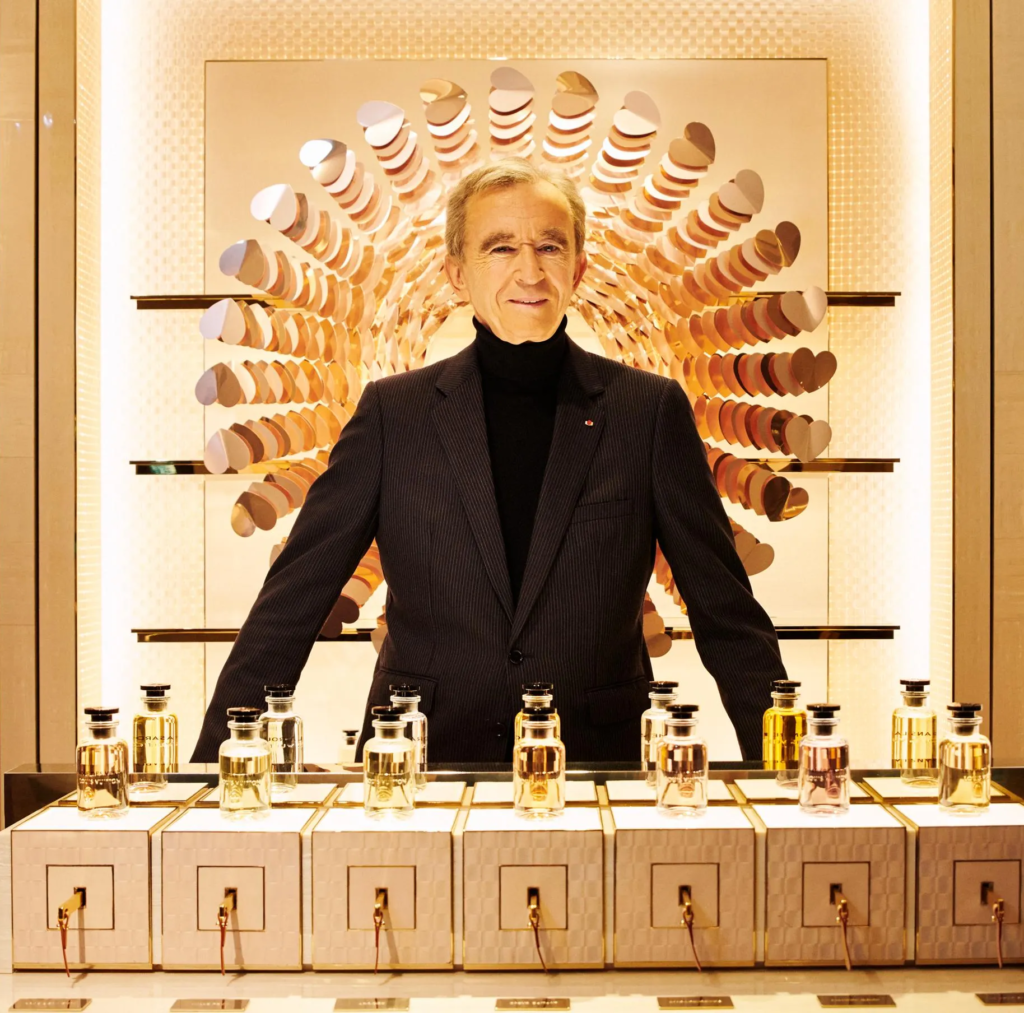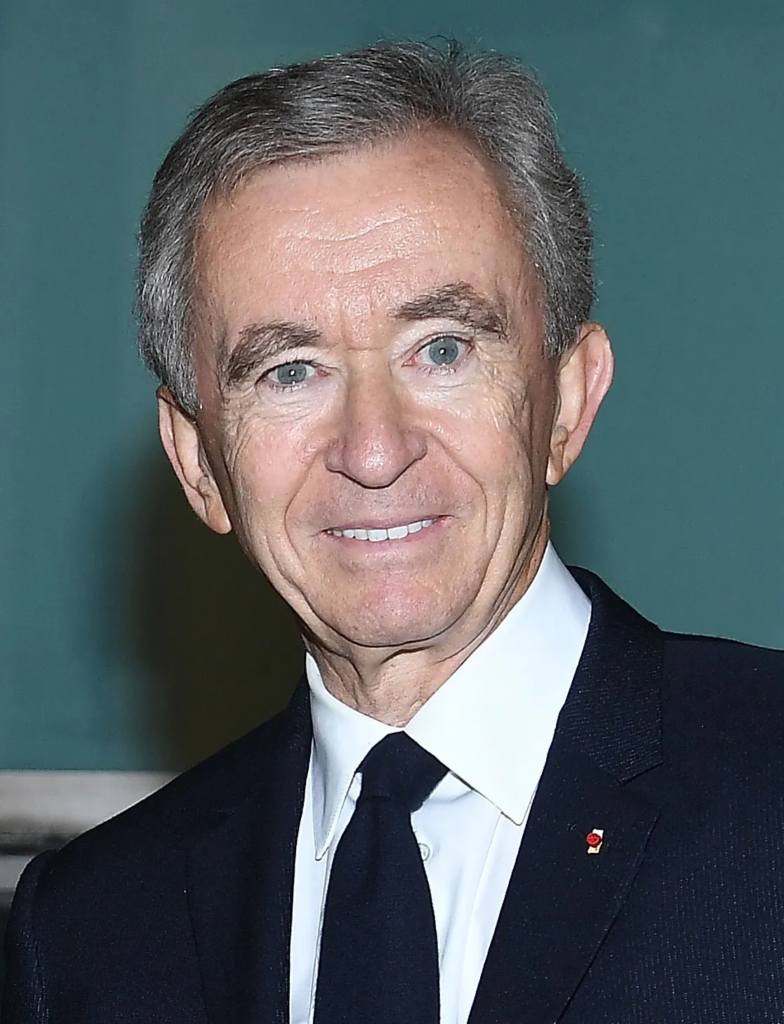
Bernard Arnault is one of the most powerful and richest men in the world. He is the CEO of LVMH Moët Hennessy Louis Vuitton, the largest luxury goods company on the planet. Arnault turned fashion, perfume, and luxury into billions of dollars through sharp business moves, bold decisions, and a deep understanding of what people desire.
But how did he rise to the top? In this article, we’ll explore how Bernard Arnault became a billionaire—from his early days in business to building a luxury empire. This story is written in easy English, optimized for SEO, and perfect for readers looking to be informed and inspired.
Early Life: A Business Mind from the Start
Bernard Arnault was born on March 5, 1949, in Roubaix, France, into a wealthy, business-oriented family. His father owned a successful construction company called Ferret-Savinel.
Arnault studied engineering at École Polytechnique, one of the top schools in France. Even at a young age, he had a strong interest in business, strategy, and creativity. After graduation, he joined his father’s company and convinced him to shift the business focus toward real estate. This early move showed Arnault’s ability to spot opportunities.
Entering the Luxury World: The Key Acquisition

Bernard Arnault’s life changed in 1984. That year, a French government privatized a group of companies that included the famous but struggling Christian Dior brand.
Arnault saw an opportunity.
Using $15 million of his own money and help from investors, he bought the company Boussac, which owned Dior. It was a risky move, but it paid off. Arnault quickly sold off unprofitable parts of the business and kept only Dior and the department store Le Bon Marché.
This was his first major step into the luxury world.
Building LVMH: The Start of a Luxury Empire
In 1987, two major luxury groups—Moët Hennessy (known for champagne and cognac) and Louis Vuitton (a top fashion brand)—merged to create LVMH.
Arnault began buying shares in LVMH. By 1989, he became majority shareholder, chairman, and CEO. At the time, many people doubted whether one man could run such a large group.
But Arnault had a vision.
He wanted to create the world’s biggest luxury group—and he did just that.
Smart Acquisitions: Growing the Billion-Dollar Brand
Family
Under Arnault’s leadership, LVMH began acquiring more luxury brands across fashion, watches, jewelry, wine, cosmetics, and more. Some of the top brands in the LVMH family include:
- Christian Dior
- Louis Vuitton
- Fendi
- Givenchy
- Marc Jacobs
- Sephora
- Dom Pérignon
- Hublot
- TAG Heuer
- Tiffany & Co. (bought in 2021 for $15.8 billion)
These brands were not just famous—they were symbols of luxury. Arnault made sure they stayed unique, exclusive, and highly desirable.
He followed a simple but powerful strategy: buy great brands, keep their identity, and grow their global presence.
Secrets Behind Arnault’s Billionaire Success
| Success Factor | Description |
|---|---|
| Sharp Business Vision | Spotted value in underperforming luxury brands. |
| Long-Term Strategy | Focused on sustainable growth, not short-term profits. |
| Brand Preservation | Maintained the luxury image of each brand. |
| Global Expansion | Grew brands into Asia, the U.S., and beyond. |
| Innovation + Tradition | Combined modern marketing with classic brand values. |
Arnault is known for being calm, private, and extremely focused. He doesn’t chase attention, but his business actions speak louder than words.
Luxury and Lifestyle: Selling Dreams, Not Just Products
One of Arnault’s biggest talents is understanding that luxury is more than a product—it’s an emotion.
He once said, “Luxury goods are the only area in which it is possible to make luxury margins.”
This means people are willing to pay more if they feel something special when they buy a product. Under his leadership, LVMH brands created not just items, but experiences and status.
Net Worth: One of the Richest in History

Bernard Arnault’s wealth comes mainly from his ownership stake in LVMH. As of 2025, his net worth is estimated at over $220 billion, according to Forbes and Bloomberg. This puts him regularly at the top of the world’s richest people, often trading the No. 1 spot with Elon Musk and Jeff Bezos.
His wealth has increased rapidly thanks to the growing demand for luxury, especially in Asia, the Middle East, and among young high-net-worth individuals.
Challenges and Controversies
Arnault has faced some challenges too:
- Criticism for tax decisions, especially during debates in France about wealth taxes.
- Market pressures during COVID-19, which hurt luxury sales—but LVMH recovered strongly.
- Tough negotiations, like with the Tiffany & Co. deal, which faced delays and legal threats before being completed.
Still, his leadership remains admired in the business world for being firm, focused, and results-driven.
Personal Life: Private but Influential
Bernard Arnault is married and has five children, several of whom work at LVMH. He is deeply involved in the arts, and LVMH funds many cultural institutions and museums.
He also created the Fondation Louis Vuitton, a major art museum and cultural center in Paris, showing his passion for both luxury and creativity.
Arnault is known to play classical piano, and he’s described as quiet, elegant, and strategic—a perfect fit for the world he rules.
Top Lessons from Bernard Arnault’s Billionaire Journey
| Lesson | What It Means |
|---|---|
| Think Long-Term | Arnault focused on building an empire, not chasing fast wins. |
| Buy and Build | He acquired smart, grew them carefully, and kept their magic. |
| Stay Private, Work Hard | He avoided drama, stayed humble, and focused on results. |
| Emotion Sells | He sold a lifestyle, not just a product. |
| Talent Matters | He hired strong creative directors and let them shine. |
Legacy: The King of Luxury
Bernard Arnault turned a single opportunity—buying Dior—into a luxury empire of over 75 brands. He didn’t create these brands, but he revived, protected, and scaled them better than anyone else in the world.
With vision, patience, and sharp execution, he proved that luxury isn’t just about gold and glitter—it’s about excellence, exclusivity, and emotional value.
read more- How Steve Ballmer Built His Billion-Dollar Fortune from Scratch











Leave a comment